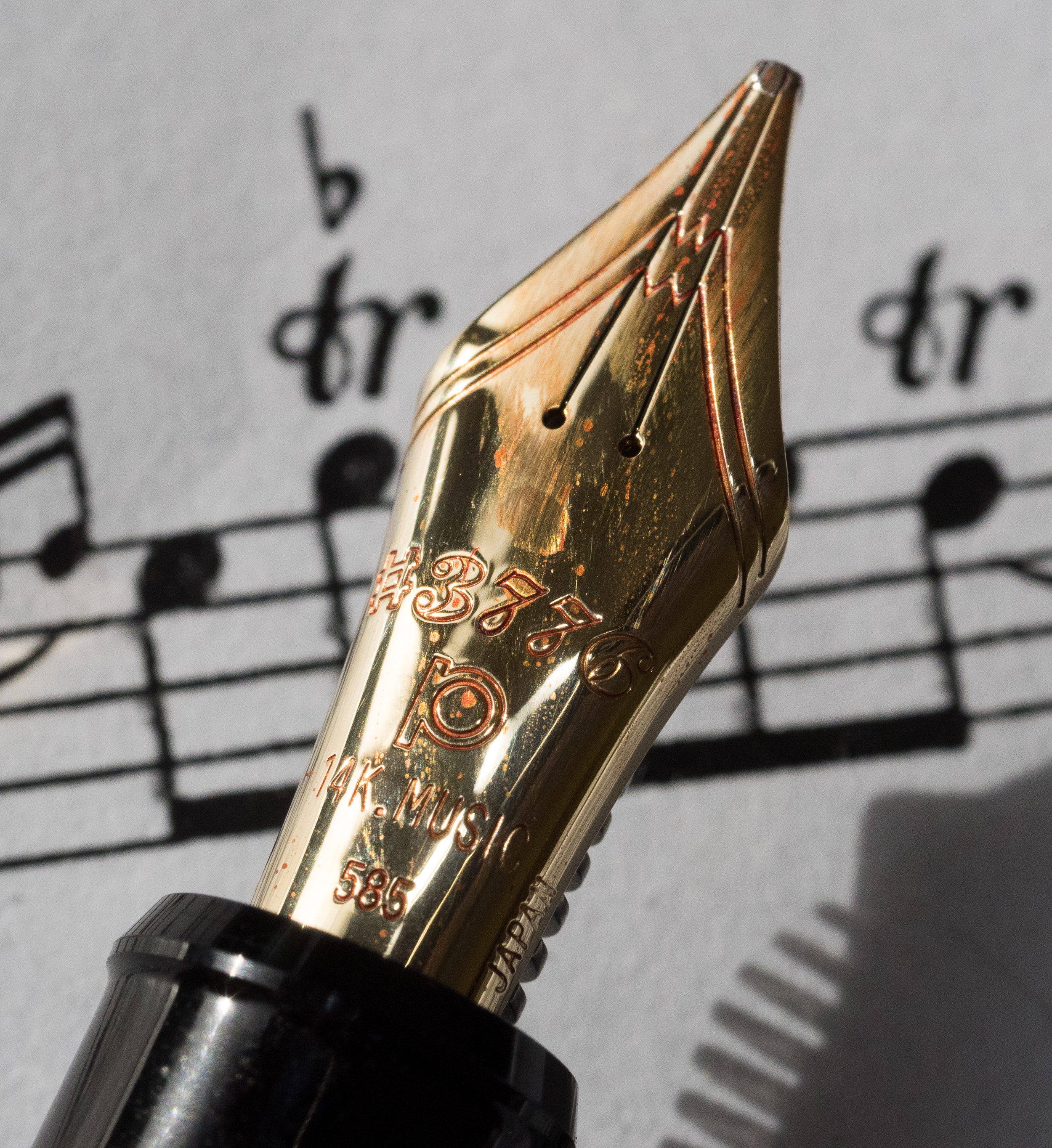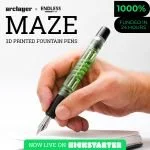(Susan M. Pigott is a fountain pen collector, pen and paperholic, photographer, and professor. You can find more from Susan on her blog Scribalishess.)
The Platinum 3776 Century music nib is a 14K nib with three tines instead of the usual two. Music nibs were originally created for composing music, so the nib creates the fat part of the notes and turned vertically, the stems. See this article on Richard's Pens for an in-depth discussion. Music nibs can also be used for general writing, offering a wide line with some variation.
The four big Japanese companies that make music nibs are Nakaya, Sailor, Pilot, and Platinum. Sailor's music nibs are unusual in that they only have two tines, so some do not consider them authentic music nibs. Nakaya and Platinum's music nibs are almost identical except for branding. If you want to try a music nib, but don't want to pay a premium price, Platinum is the way to go. Pilot also offers a relatively inexpensive music nib on its custom 912 model.
Nakaya Music Nib
The pen I'm reviewing is the plain black Platinum 3776, but now you can get Platinum's music nib on the fancier 3776 Century models in Chartres Blue or Bourgogne. The black pen itself is unremarkable–it is made of plain plastic with gold trim.
The larger band around the cap is engraved "Platinum Made in Japan 3776."
The pen is a cartridge/converter filler. The converter works well, but holds only 0.5 ml of ink, and the music nib puts out a lot of ink.
The nib is, of course, the heart of this pen. It is engraved with the usual 3776 design. The gorgeous fat nib and two tines are what make it stand out.
Unlike other, finer Platinum nibs, the music nib has no spring to it at all, and it definitely has no flex. But, it writes an exceptionally smooth, fat line.
Various Platinum Nibs
There's not much of a difference when you compare writing with the Platinum music nib and Nakaya's music nib.
Platinum Music Nib
But, I had John Mottishaw add flex to my Nakaya music nib, and you can see the extra line variation when I apply pressure to the Nakaya nib. That added flex also makes the Nakaya nib write more softly than the Platinum. Still, the Nakaya doesn't come close to the flex of a vintage music nib (oh, for a Waterman music nib!)
Nakaya Music Nib with Flex
You can purchase the plain black Platinum 3776 with a music nib at Pen Heaven (UK) for $193.23.
Pros
- The Platinum black 3776 Century with a music nib is reasonably priced.
- The 18K nib is essentially the same nib as the much more expensive Nakaya music nib.
- The music nib writes a smooth, broad line with good variation.
Cons
- The pen itself is unremarkable. If I were to purchase a Platinum with a music nib, I would get the more colorful Chartres Blue or Bourgogne.
- The cartridge/converter system is fine, but because the music nib requires a lot of ink, expect to refill more often.
- The Platinum music nib is stiff and offers no flex or spring.
(This pen was provided for review at no charge by Pen Heaven.)

























